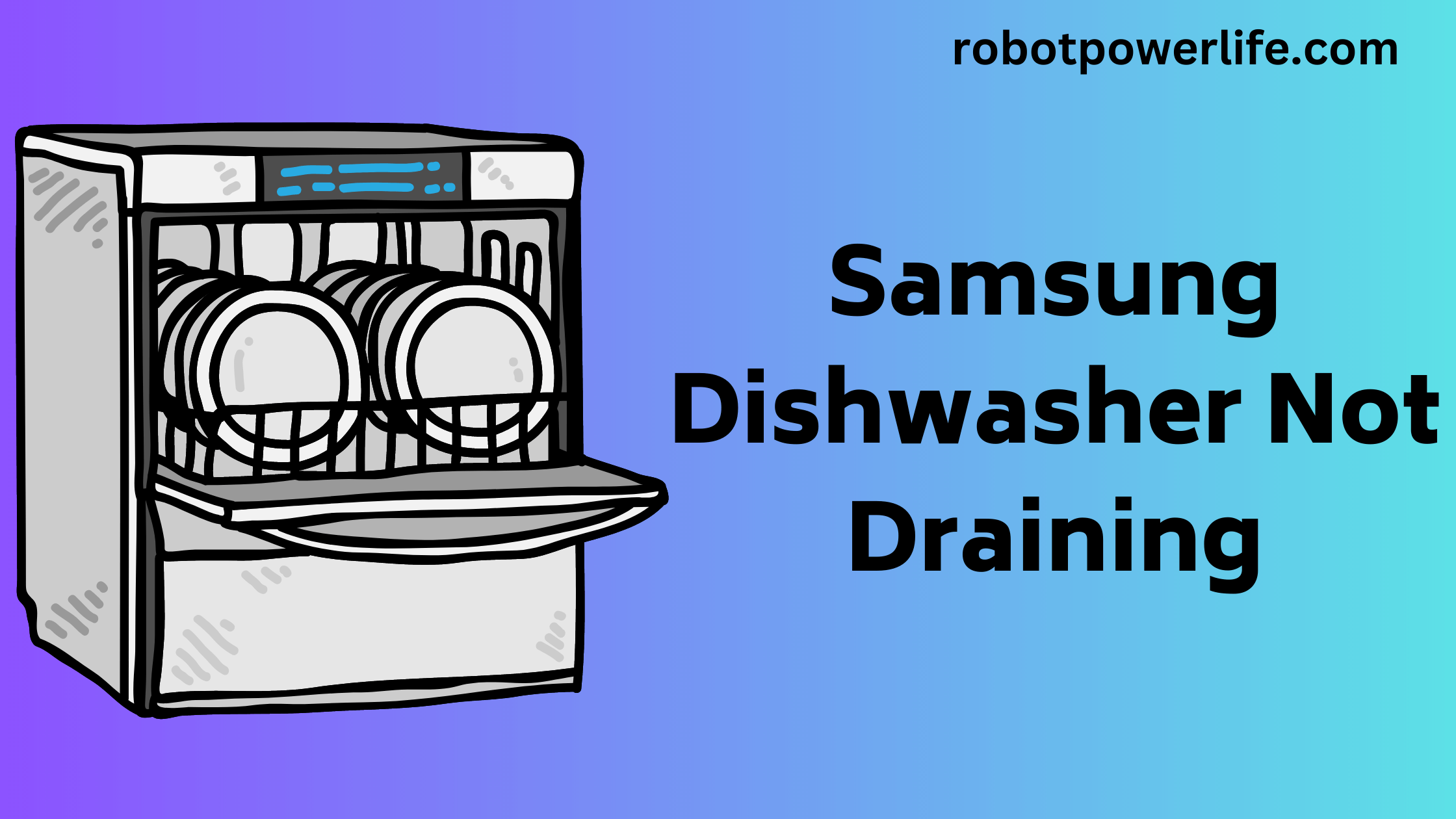Samsung is a very well-known and famous brand reputation when it comes to electronic appliances including Samsung dishwashers. Dishwasher water not coming in is one of the common problems experienced with Samsung dishwashers. Samsung dishwasher not draining, the reasons for this problem and the issues to fix this problem, we have explained in detail in this article.
This problem is caused by edible particles clogging the filter, drain hose, or pump body. Sometimes a faulty drain pump or check valve is the cause of the problem. The dishwasher should be disconnected and the water supply turned off before making any repairs.
Dishwasher Causing Problems
Pour water into the sink connected to the dishwasher to see if it comes out. If the dishwasher is full of debris, make sure the disposal is not clogged. If the dishwasher has just been installed, check that the garbage disposal knockout plug is routed into the drain tube of the garbage disposal.
Check the Dishwasher’s Connection to the Sink
The dishwasher must be connected to the drain hose or air gap. There should be an elevated loop in the drain hose. This process may be reliable for preventing wastewater from the dishwasher from producing to the dishwasher. An air gap is a fitting installed above a sink or kitchen wardrobe.
Its function is to force air into the hose, causing the negative pressure to dissipate and return the discharged wastewater to the dishwasher. The “high loop” process performs by looping the trough hose so that it is secured under the sink. If the air crevice is blocked, the dishwasher will have trouble draining the water. Therefore the cover has to be removed and the air gap inspected and cleaned of debris.
Clean the Filter, Drain Hose, and Tub
Depending on the model, Samsung dishwashers have a removable filter. Removing the filter clears the drain pump of any waste that is clogging it. If you need to know how to use or remove the filter, you can refer to the dishwasher’s manual. Samsung dishwasher not draining, the reasons for this problem and the issues to fix this problem
If the model has a filter assemblage or pumps covered with screws that have to be removed to access it, removing the screw and washing the filter and pump assembly solve the drainage issue.
The filter cover is damaged, it must be returned to avoid damage to the pump and engine seals. Sometimes the dishwasher will not drain due to a blockage, then using a dishwasher cleaning effect or alternatively white cotton wool is necessary to clean out the meals particles and minerals that are preventing the dishwasher from draining. If you’re using white vinegar, pour 1 cup into a dishwasher bowl and place it on the top dish rack.
Check for Blocked or Kinked Drain Hose
A kinked drain line is preventing the dishwasher from draining. The drain hose should not be bent. it’s bent, it’s because the dishwasher was installed. If the issue continues, disconnect the drain hose from under the sink and check for blockages. If the hose is disconnected, put the end of the hose in a large bucket and run a quick cycle.
This blockage may come out of the bucket showing that the pump is not working. Turn off the dishwasher or have another tub ready to contain the water that comes out of the dishwasher. This will need to be cleaned by removing the front kick plate or access panel on the bottom of the dishwasher where the drain hose connects to the pump and possibly removing it.
Check Drain Pump
If the problem persists after trying all methods, the dishwasher drain pump needs to be checked for defects. The pump motor may have mechanical or electrical faults. A mechanical fault occurs due to the breakage of the impeller. If it is injured, it will require to be replaced.
It cannot be rotated easily indicating that the pump is faulty. Make sure there isn’t anything stuck in it that’s messing it up. Check the drain pump for continuity with a multimeter to see if it has an electrical fault. If the pump is bad or not working correctly, it will need to be returned.
When testing, most working drain pumps show a reading of about 200 ohms. Depending on the Samsung dishwasher model, the drain pump is accessed by removing the bottom front kick plate or by placing the dishwasher behind it and opening the access panel on the bottom of the dishwasher.
Check Solenoid Valve
Samsung dishwashers have a drain solenoid valve that extends to drain the water. This high or low temperature can cause the solenoid to malfunction. If the solenoid stops working, the valve will not extend and the dishwasher will not drain.
The drain solenoid is checked with a multimeter in the same way as the pump motor is checked. So that it can exist and know whether there is any defect in it or not. If the solenoid is faulty or worn out, you need to replace it. The solenoid is almost the motor or drain pump. This can be repaired by removing the bottom access panel.
Check Valve (Flapper)
The check valve prevents waste water from returning after being pumped back into the dishwasher. When the check valve is closed, the water does not drain properly. You can smoothly repair this issue by cleaning the check valve.
The check valve is near the outlet port of the drain pump or pump housing. You have to remove the bottom access panel to see it. The flapper should move freely and show no signs of damage. Samsung dishwasher not draining, the reasons for this problem and the issues to fix this problem
conclusion
Samsung is a very well-known and popular brand name when it comes to electronic appliances including Samsung dishwashers. Dishwasher water not coming in is one of the common problems experienced with Samsung dishwashers.
We have explained in detail in this article above why the Samsung dishwasher not draining, the reasons for this problem, and the issues to fix this problem. The dishwasher should be disconnected and the water supply turned off before making any repairs.
Like this post? Could you share it with your friends?
Suggested Read –
- TCL TV Won’t Turn on
- Toshiba Fire TV Remote Not Working
- How to Get Roku App on LG Smart TV
- What Channel Is Freeform on DirecTV
- HBO Max Not Working on Samsung TV
- Samsung Wireless Charger Blinking Yellow
- Paramount Plus Not Working on Samsung TV



